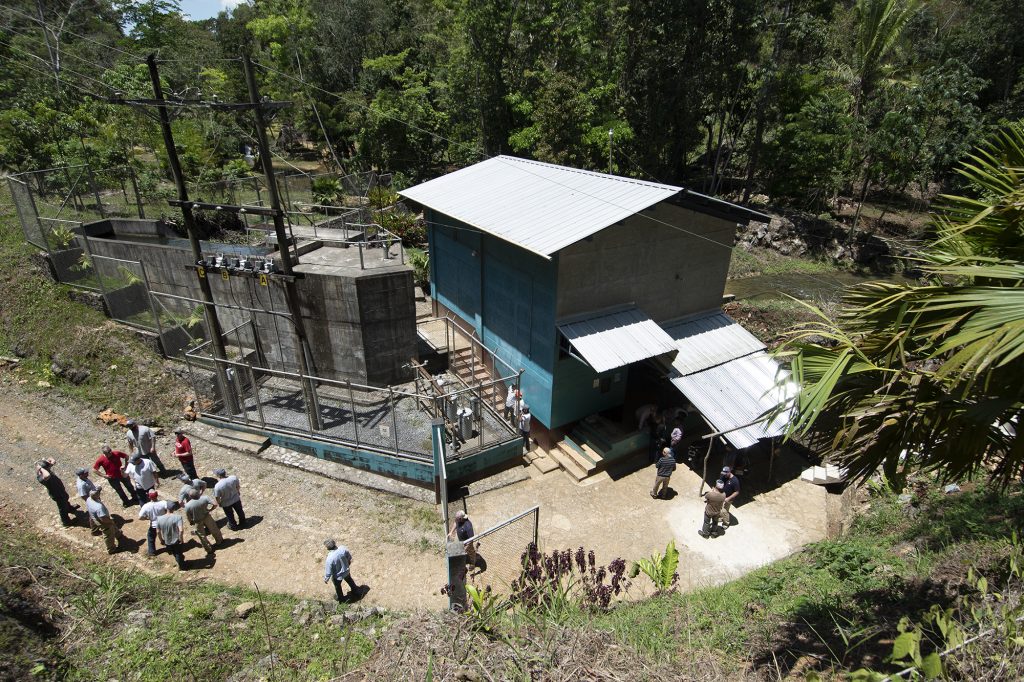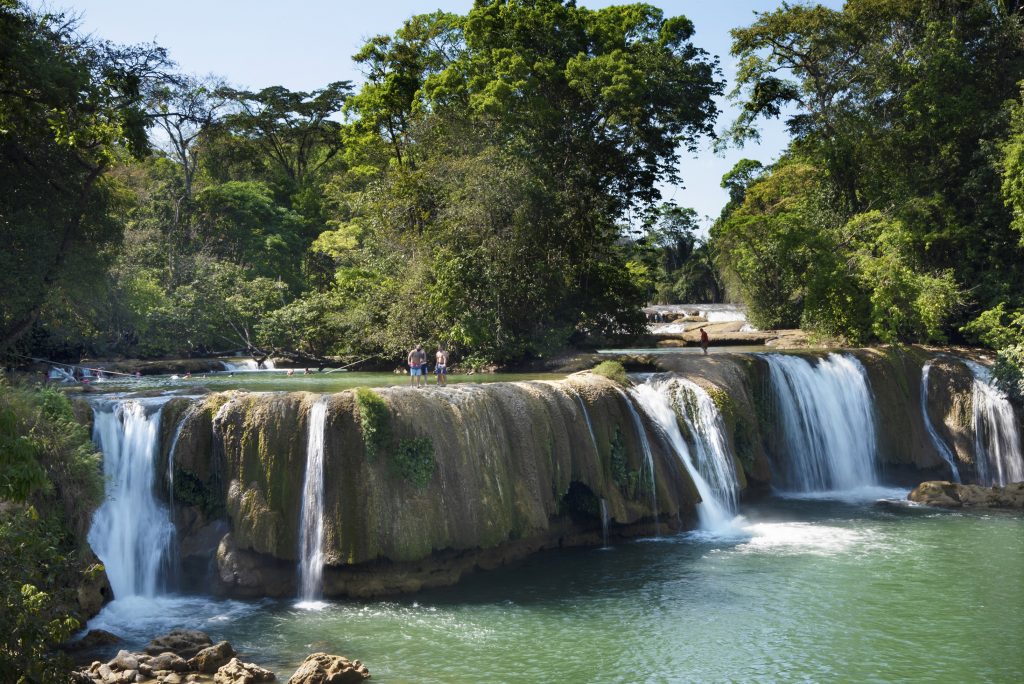San Jacinto’s Power Supply
A look at the small hydroelectric generating station that serves the village

In April 2019, 18 Indiana electric cooperative lineworkers and staff returned from rural Guatemala after extending power lines into the tiny village of San Jacinto. It was the fourth trip of a continuing initiative, “Project Indiana: Empowering Global Communities for a Better Tomorrow,” that began in 2012.
The crew spent just over two weeks building power lines and wiring about 90 homes, two churches and a school campus in the eastern department of Alta Verapaz.
But before Project Indiana lineworkers can put boots on the ground to build power lines on any of their trips, the electricity has to be there. The power supply for San Jacinto was a micro hydropower generating station.
On the way to San Jacinto, the lineworkers along with Hugo Arriaza, Project Indiana’s Guatemala-based contractor who oversees most of the logistics for the crews, stopped to tour the power station along the Chiyú River. The Hoosiers were surprised to learn the generator and distribution lines to 12 nearby villages, which they were about to tap into for San Jacinto, were built by a Japanese government agency.
“Hugo wanted us to see where the source of power came from,” recalled Jamie Bell, a construction engineer for NineStar Connect who was a coordinator on the trip. “I thought it was pretty interesting what the Japanese did for the community.”
Guiding the tour of the power station tour was Victor Pzalam, acting administrative coordinator of The Farmers Development Association, the local utility that operates the power station and maintains the lines serving the Las Conchas area.
The Japan International Cooperation Agency began working with the Republic of Guatemala just over 10 years ago. The Japanese governmental agency assists economic and social growth in developing countries around the world.
Since the late 1990s, Guatemala’s electrification rate rose from 60 percent to 86 percent, mostly by expanding its grid. But just like in the United States 100 years ago, the most rural regions of Guatemala were left out of the expansion. Difficult terrain along with the high rates of poverty in the rural areas hampered grid development. In the most rural areas of Alta Verapaz, where more than half of the people live in extreme poverty, for instance, the electrification rate was less than 15 percent.
Through an $11 million grant, the Japanese agency built small-scale hydroelectric plants in three impoverished areas — Las Conchas, Seasir and Jolom Ijix — and provided technical support. JIUC completed the projects in 2014 and continues monitoring them.
Sepamac, the village electrified by Project Indiana’s 2015 trip (about 30 miles to the southwest of San Jacinto as the quetzal bird flies — but over 110 miles via primitive roads), was powered by the hydroelectric station at Seasir on the Cahabón River.

The hydropower station at Las Conchas did raise concern among the people in the area because of its proximity to Las Conchas waterfalls and nature park. The beautiful falls and turquoise pools are a tourist attraction and source of pride for the area. The power station is just a skipping-stone’s throw upriver from the falls within the park’s boundaries.
Las Conchas is the Spanish translation of the place named Se Pemech in the local Q’eqchi’ Mayan language. It means “the snails.” It refers to the many piles and deposits of mollusk shells found near the falls. The abundant, edible snails have been an attraction for the local indigenous population for countless generations. Great care was taken to mitigate any effects the power station would have on the water flow and the flora and fauna of the park and the falls.
“The generation plant was smaller than I thought it would have been,” noted Bell, “but it goes to show there isn’t that much load.”
Even with the addition of San Jacinto, bringing the total homes and buildings served by the hydro plant to around 550, the Chiyú River power station — with a 150 kw capacity — could handle another four or five times more, Pzalam noted. Most of the electricity used in the Guatemalan homes is for lighting and refrigeration. By typical American standards of power use, the station would power maybe seven homes at best.With the development Project Indiana hopes it has helped nurture, future challenges for the rural Guatemalan utilities will be finding new sources of power to supplement and back up the generation they already have. These are challenges Project Indiana is also willing to help utility officials face as they continue powering rural Guatemala to a brighter future.
